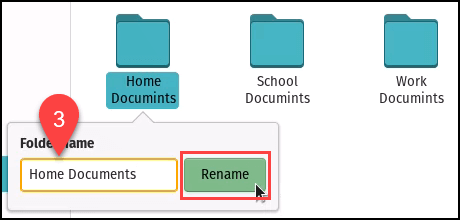
In certain cases, when you are renaming files, folders, and directories that are system files, those times you will need to have root or superuser access. However, it is not important to have root access or superuser access to rename files using the “mv” command. Note: To rename a file in Linux, you need to be in the directory you want to rename a file. Here is the example to change/rename a file or directory name in Linux using the “mv” command, mv old_file_name new_file_name mv oldlife.pdf newlife.pdf Once the directory is changed, you can now use the “mv” command to rename the files and folders. If you are not in the same directory where the file is located, you must first use the “cd” (change directory) command. It is important to locate the directory and perform the operations in the same directory to execute this command successfully.

In this example, we are renaming the “old_file_name” with a “new_file_name” using the “mv” command in action. If the basics are unclear to you, here is a quick example that illustrates the rename operation in Linux using the “mv” command.
Rename folder linux how to#
So, if you are using a Linux version such as Kali Linux, you might notice the new filename comes first and then the old filename.Īlso read: How to Start, Stop and Restart Apache Ubuntu? Example Here you need to be cautious as some Linux versions interchange the old name and new filename position. To rename a file with the “mv” command, specify the file name to be renamed and the new file name. The general syntax of using the “mv” command is, Syntax: mv source destination To know the list of options available with the “mv” command, type – – help and the list of options will be listed. You can use these commands for various operations alongside renaming the files and folders. The – – help command, when used with “mv”, will list out all the options that you can use with the mv command. There are a set of file operations you can use with the “mv” command on your Linux OS, and we will use it to change the filename or rename it. Though the “mv” command is used for moving files and directories, it can also rename files. Using the “mv” command, you can change a single file or multiple files from a source to a destination. The “mv” command is a shorthand for the move command, which signifies moving files and directories. Renaming a file in Linux using the “mv” command Ensure you are aware of the commands and using the correct location and filename. The reason for this is to effectively rename the files on Linux despite its location and access/permissions.Īlso, it is important to note if you are using Linux in superuser or root mode, there is a good chance of you deleting the important system files and directories. To use the bash commands effectively, it is better to be in the superuser mode or have root access. In the later section of this article, we will also learn the GUI options to rename a file or directory in Linux operating system. To do this, we will use the “mv” command first and then use the “rename” command as an alternative option. In this tutorial, we will first learn to rename files in Linux using the bash or shell commands.
Rename folder linux install#
Conclusion | Rename Files and Directories in LinuxĪlso read: How to Install WSL 2 on Windows 10? | Windows Subsystem for Linux 4 Ways to Rename Files and Directories in Linux.


Metamorphose2 – Renaming files and Directories in Linux pyRenamer – Best Desktop Client to Rename Files in Linux

4 Ways to Rename Files and Directories in Linux.


 0 kommentar(er)
0 kommentar(er)
